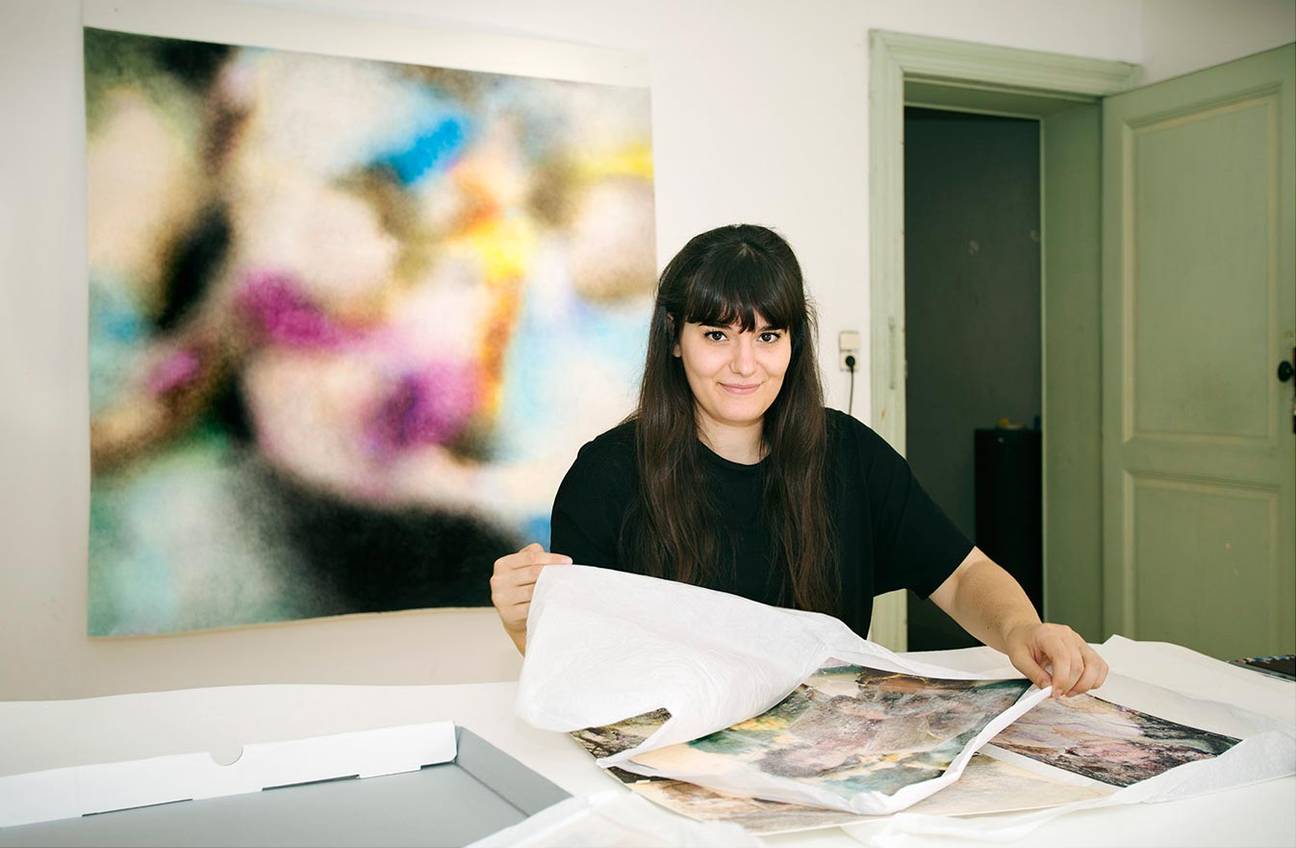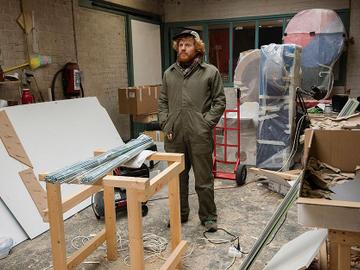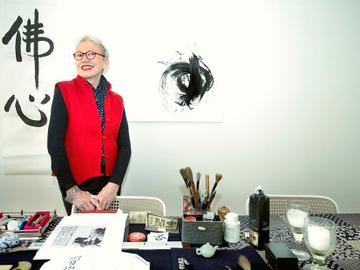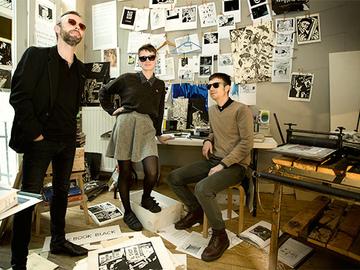Léa Belooussovitch explores the nature of violence. In her work she counters the sharp edges of the images the media serve us with a blurring that acquires a poetic power of expression.

© Heleen Rodiers
Between the visible and the invisible: in the studio of Léa Belooussovitch
"There are times when it is simply more sensible not to see certain images," says Léa Belooussovitch. "What happened in Nice for example. I refused to watch those videos. At one point the media actually went to film the corpses and the destroyed families, purely out of a kind of visual hunger. The things children's eyes are forced to see these days is already horrific. Do we really need images like this? They do absolutely have a documentary value, and occasionally one image from the incessant stream does leave an impression. But why specifically that image? And will it remain in our memory after a month?"
It is from this excess of visual information that the Parisian-born artist draws the raw materials for her very poignant, refined work. Based on her artistic research – into the nature of violence, into the status and identity of images that depict this violence, into their truthfulness, their manipulation, and their effects – she creates multiform works which place fragile, human accents on the continuum between the visible and the invisible.
"By drawing on felt with coloured pencils, you transform the material, give it volume, and make it almost sculptural. It becomes very organic, like a body."
This becomes very clear in her studio, housed in a town house in Vorst/Forest, into which she recently moved with five fellow artists who all graduated from La Cambre, and which in time will also feature an exhibition space on the ground floor. All over the space tiny bits of twisted reality appear. From photos that exclude the hunter or the executed from the shot, verbally rendered "last statements" that scream innocence, and prints of moulding photos which she "rescued" from her mother's cellar, to her drawings on felt – astonishing defences of poetry, passionate pleas for humanity: Léa Belooussovitch's work reframes reality, with the intention of creating a space for rest, imagination, and contemplation. "My drawings on felt are always based on reframed press photos in which victims hang in the balance between life and death, and with which the photographer consciously attempts to elicit empathy. Very cruel, very vulnerable."
Léa Belooussovitch counters the sharp edges of these images with a blurring that acquires a poetic power of expression. "By drawing on felt with coloured pencils, you transform the material, give it volume, and make it almost sculptural. It becomes very organic, like a body. The textile characteristics of the felt also mean that you can't draw very clearly, and it is that, along with the fact that my drawings are also mentally blurry, which serves the purpose of the work. Joseph Beuys already used felt as a protective material. This is a way to swaddle the victims, give them their anonymity back, and create a distance that might possibly make other things visible too. Only the composition of the image remains, what is left as residue in my head. The drawings are entitled with the location and time of the events. As an anchor to reality, as a memory of something that really happened and an indicator of concrete events."
"The drama remains impregnated in the work, buried under all the layers. Like a shroud cast across the event, or a ghost"
But what you see resists being appropriated too easily. "The drama remains impregnated in the work, it is buried under all the layers. They are a little bit like a shroud cast across the event, or a ghost. That enables you to slow down your vision and leads you to inchoate contemplation." With the eyes as mirrors of the soul.
Stephan BALLEUX, Sébastien BONIN, Léa BELOOUSSOVITCH, Hannu PRINZ
> 23/10, D+T Project Gallery, Bosquetstraat 4, Sint-Gillis
Wunderkammer
Read more about: Sint-Gillis, culture, Expo, Wunderkammer




Fijn dat je wil reageren. Wie reageert, gaat akkoord met onze huisregels. Hoe reageren via Disqus? Een woordje uitleg.